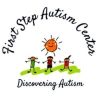Introduction
Choosing the right educational path for your autistic child is a significant decision that can greatly impact their development and future. With various options available, parents often find themselves at a crossroads, wondering which approach is best suited to their child’s unique needs. In this blog post, we’ll explore the educational options available for autistic children and provide guidance on making the right choice. Educational for Autistic Children

- Public Schools and Special Education Services
Public schools offer special education services to support students with disabilities, including autism. These services may include individualized education programs (IEPs), speech therapy, occupational therapy, and social skills training. Many parents opt for public schools as they provide an inclusive environment where children can interact with neurotypical peers.
Pros:
- Free and accessible to all.
- Exposure to a diverse group of peers.
- Access to specialized services and professionals.
Cons:
- Limited resources and overcrowded classrooms.
- May not always cater to the specific needs of autistic children.
- Private Special Education Schools
Private special education schools are designed specifically for students with disabilities, including autism. They offer smaller class sizes and highly specialized teaching methods tailored to the needs of autistic children.
Pros:
- Specialized curriculum and teaching methods.
- Smaller class sizes for more individualized attention.
- A supportive and understanding environment.
Cons:
- Tuition costs can be high.
- Limited exposure to neurotypical peers.
- Homeschooling
Some parents choose to homeschool their autistic children, allowing for a highly personalized and flexible educational experience. Homeschooling can be adapted to cater to a child’s unique learning style and pace.
Pros:
- Highly individualized education.
- Flexibility in scheduling and curriculum.
- Reduced sensory overload.
Cons:
- Requires a significant time commitment from parents.
- Limited social interaction with peers.
- May lack access to specialized services.
- Inclusion Programs
Inclusion programs aim to integrate autistic children into mainstream classrooms while providing support as needed. These programs encourage interaction between autistic and neurotypical peers, fostering social and academic growth.
Pros:
- Promotes social integration.
- Exposure to neurotypical peers.
- Access to both general and specialized education.
Cons:
- May not fully meet the needs of all autistic children.
- Potential for sensory overload in mainstream classrooms.
- Therapeutic Day Schools
Therapeutic day schools offer a combination of academic instruction and therapeutic support. They are designed for students with emotional and behavioral challenges, including autism.
Pros:
- Integration of academic and therapeutic services.
- Focus on behavioral and emotional development.
- Smaller class sizes.
Cons:
- Tuition costs can be high.
- Limited exposure to neurotypical peers.
Conclusion
When it comes to choosing the right educational path for your autistic child, there is no one-size-fits-all solution. Each option has its own advantages and disadvantages, and the best choice will depend on your child’s unique strengths, challenges, and preferences.
It’s essential to work closely with educators, therapists, and specialists to develop an individualized education plan that meets your child’s needs. Remember that the journey of finding the right educational path may involve trial and error, but with patience and persistence, you can provide your autistic child with the support and opportunities they need to thrive.
For more information and resources on autism, visit our website at www.fsautismcen.org. Together, we can navigate this journey with knowledge, understanding, and unwavering support. Advocacy and Autism Parenting.

